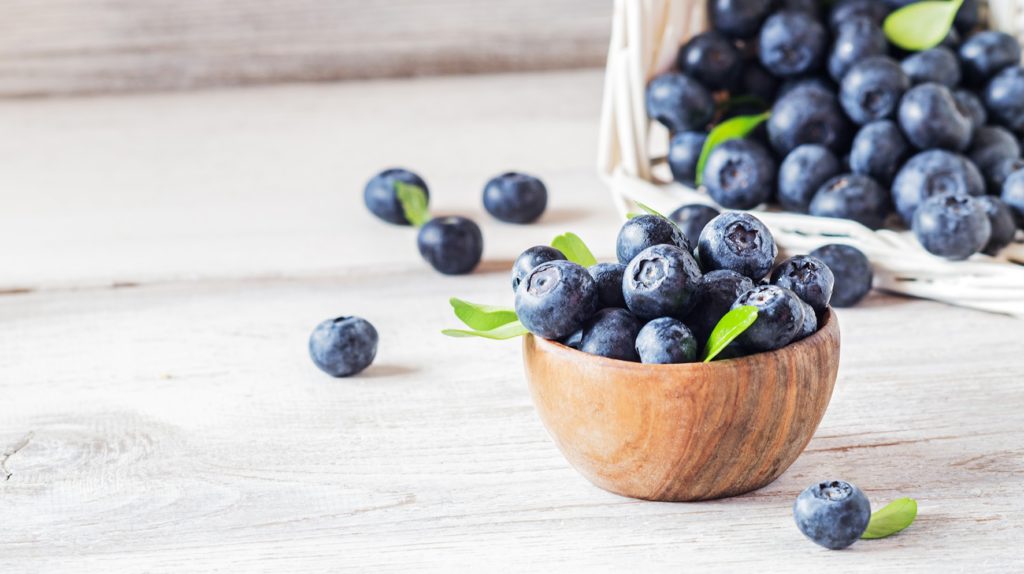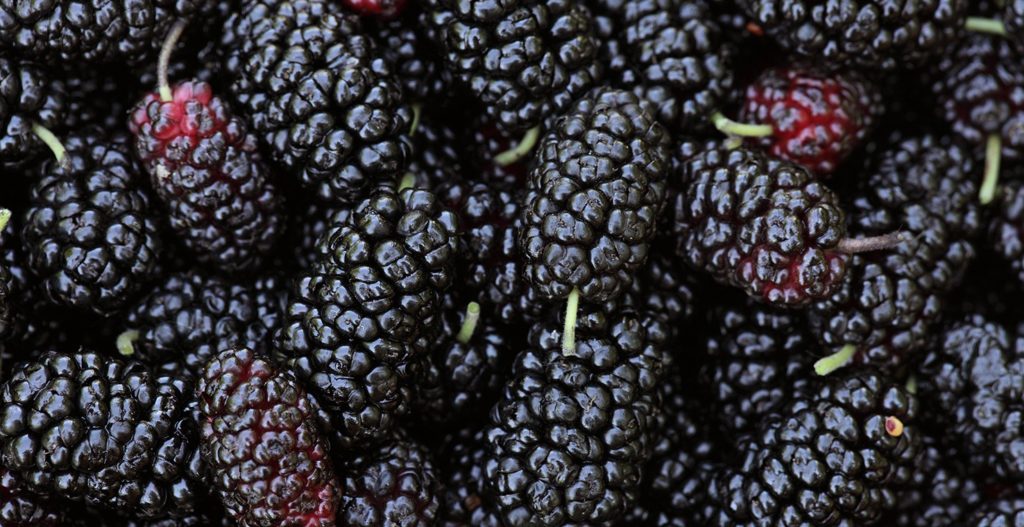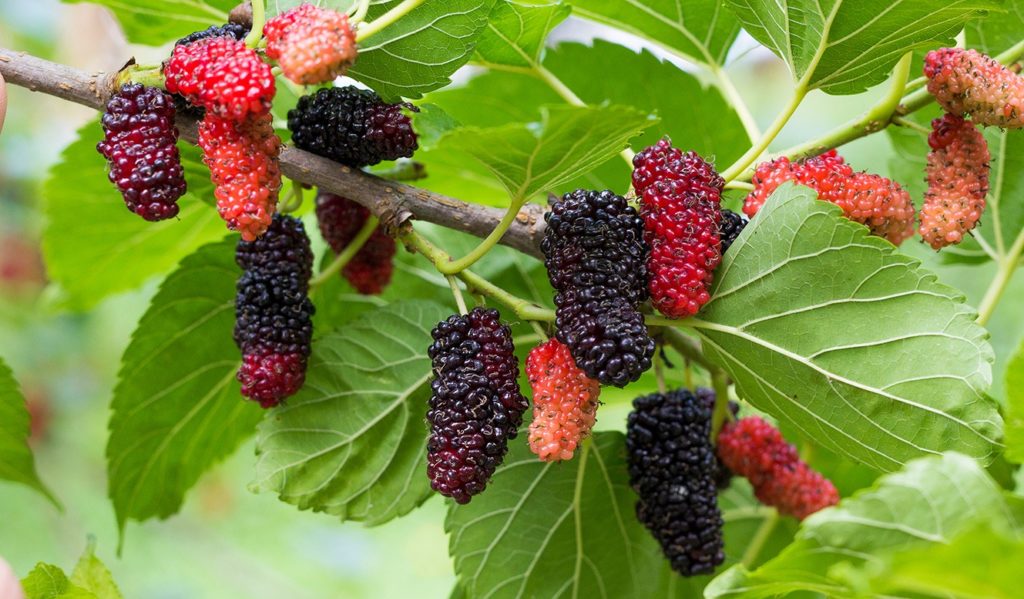Summer fruit: beautiful berries
Berries are like nature’s lollies – tiny sweet treats that are so good to eat, especially when they’re freshly picked. But while they may be small, their nutritional benefits are huge. Berries are packed with antioxidants, including anthocyanins, ellagic acid and resveratrol. These don’t just keep free radicals under control; these plant compounds may also reduce your risk of disease. Berries are also a top source of fibre, vitamins and minerals. It’s peak berry season right now, which means it’s the perfect time to load up on fresh Aussie berries. We shared some fresh facts on three berry varieties.

Blueberries
One of the few truly blue foods on earth, blueberries are sweet little bundles of goodness. The berries are grown all over Australia, but production is now centred around Coffs Harbour in northern NSW. This is where the majority of production occurs across the summer months. Other production areas include WA, SA, Queensland, Victoria and Tasmania. This provides berry-loving Aussies with almost year-round availability of fresh Australian blueberries. You can buy fresh blueberries from July to April each year.
Blueberries have three common varietal families: lowbush, highbush and rabbiteye. Numerous cultivars have been bred from these varieties. You can now even find super-sized blueberries in stores. In March 2018, OZblu tipped the scales with the world’s heaviest blueberry, which weighed in at 12.39 grams. Just over two years later, the blueberry brand has broken its own record. OZblu’s whopper of Guinness World Record-breaking blueberry was recorded in Wilbinga, Western Australia, weighing in at 16.20g, with a diameter of 36.3mm. An average-sized OZblu blueberry is around 18mm in diameter.

Choosing and using your bloobs
When selecting blueberries, look for dry, plump berries that are free from bruises or dents. Fresh blueberries have a hazy white coating called “bloom”. This works like sunscreen to protect the berries from the sun’s rays. But it’s also a sign of freshness. Because bloom protects the berries, don’t wash your blueberries until you’re ready to eat them.
To make the most of your blueberries, try these sweet and easy blueberry recipes, and this raw blueberry and cashew coconut cake (pictured above) that’s perfect for summer.
A sweet fact for you: in Ireland, a basket of blueberries is still offered to a sweetheart to celebrate the original fertility festival of Lammas Day on August 1.

Raspberries
Raspberries are grown all over Australia, from the Swan District and Southwest in Western Australia to the Sunshine Coast in Queensland. However, Victoria is the largest producer of raspberries; Tasmania is the second largest producer.
Fresh Australian raspberries are available at any time of the year. But they’re most abundant from early November until mid-April, with peak production during summer.
It’s important to select raspberries carefully. They’re very fragile, especially when stored or displayed outside refrigeration conditions. Fruit should ideally be sound, without signs of bruising, loose juiciness in the punnet or other signs of damage or defects.
Generally, fruit should be plump and of even colour. This means it’s ripe. Most raspberries will be red, obviously. However, some varieties aren’t red at all, but golden, purple or even black. Highly pigmented varieties tend to darken significantly as they approach full ripeness.
It’s best to eat raspberries within one or two days of buying them as they’re highly perishable. Store them in the fridge, but don’t wash them until you’re ready to eat them.
Fresh raspberries are a delight on their own, but they also work well as a topper for your morning yoghurt or cereal, or in baking. Try this recipe for raspberry and apple crumble bars, or use your raspberries to top the world’s healthiest chocolate cake.

Mulberries
For a fruit that holds such nostalgia for so many, you’re unlikely to find mulberries for sale anywhere. While the mulberry tree itself is surprisingly hardy, producing the fruit in large quantities is tricky. Mulberries are prone to grey mould – a fungus that affects berries. This means they have a very short shelf life when sold in a standard punnet. It’s for this reason that mulberries aren’t commercially produced on a large scale in Australia.
However, a handful of growers across Australia are now bringing back this forgotten fruit for future generations to enjoy. Viticulturalist Peter Szabo has been growing mulberries on his property in Kingston on Murray in South Australia’s Riverland region since 2015. His business, Nockburra Creek Farms, sells the fruit, and Szabo believes demand will grow.

Sweet medicine
“Mulberries really are next level,” Szabo says. “You hear about people buying blueberries for the antioxidants. I had the antioxidant levels in my mulberries analysed by the Waite Research Institute. When they sent me the results, they said they were almost medicinal.”
The fruit is also richer in anthocyanins than the Queen Garnet plum, which has been dubbed the “queen of antioxidants. But it’s not just the berry that has benefits. Mulberry leaves contain a chemical called 1-Deoxynojirimycin. Studies have shown this lowers blood sugar levels in people with type 2 diabetes. In Asia, mulberry leaf extract is widely available.
As well as the health benefits that the berries and leaves provide, the fruit is also a potent natural colourant, having three and a half times the colour density of red wine grapes.









